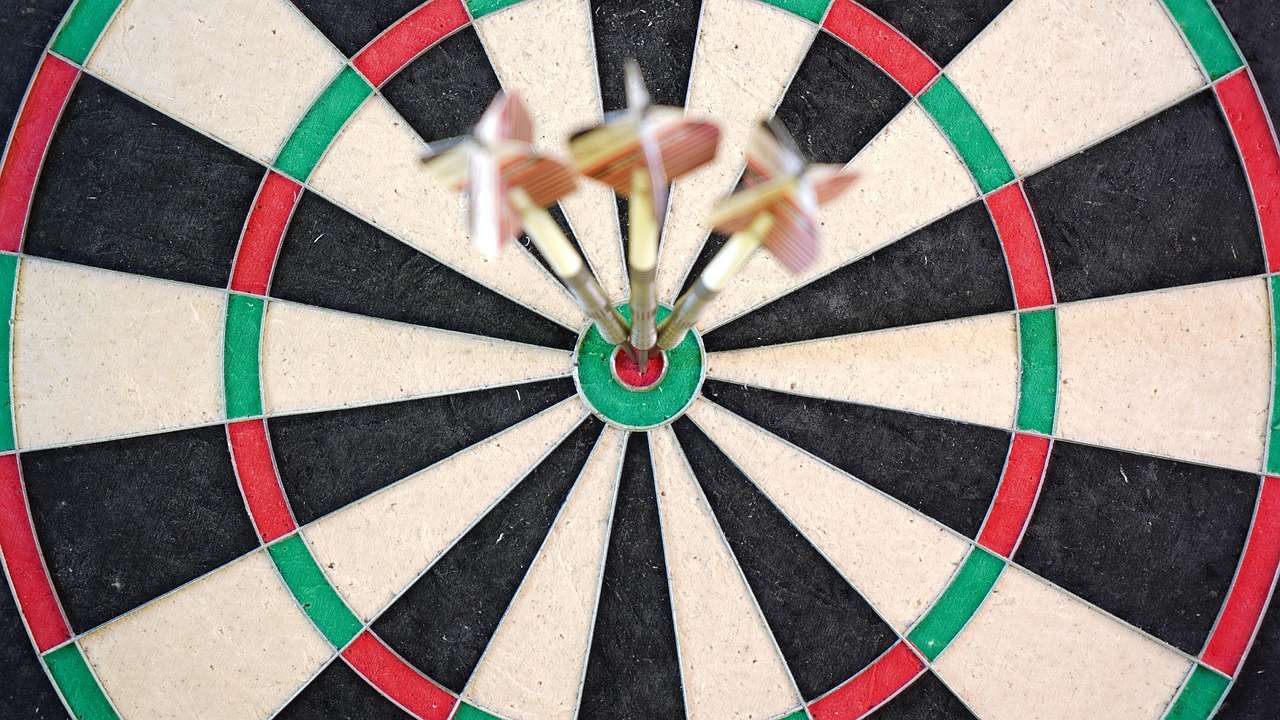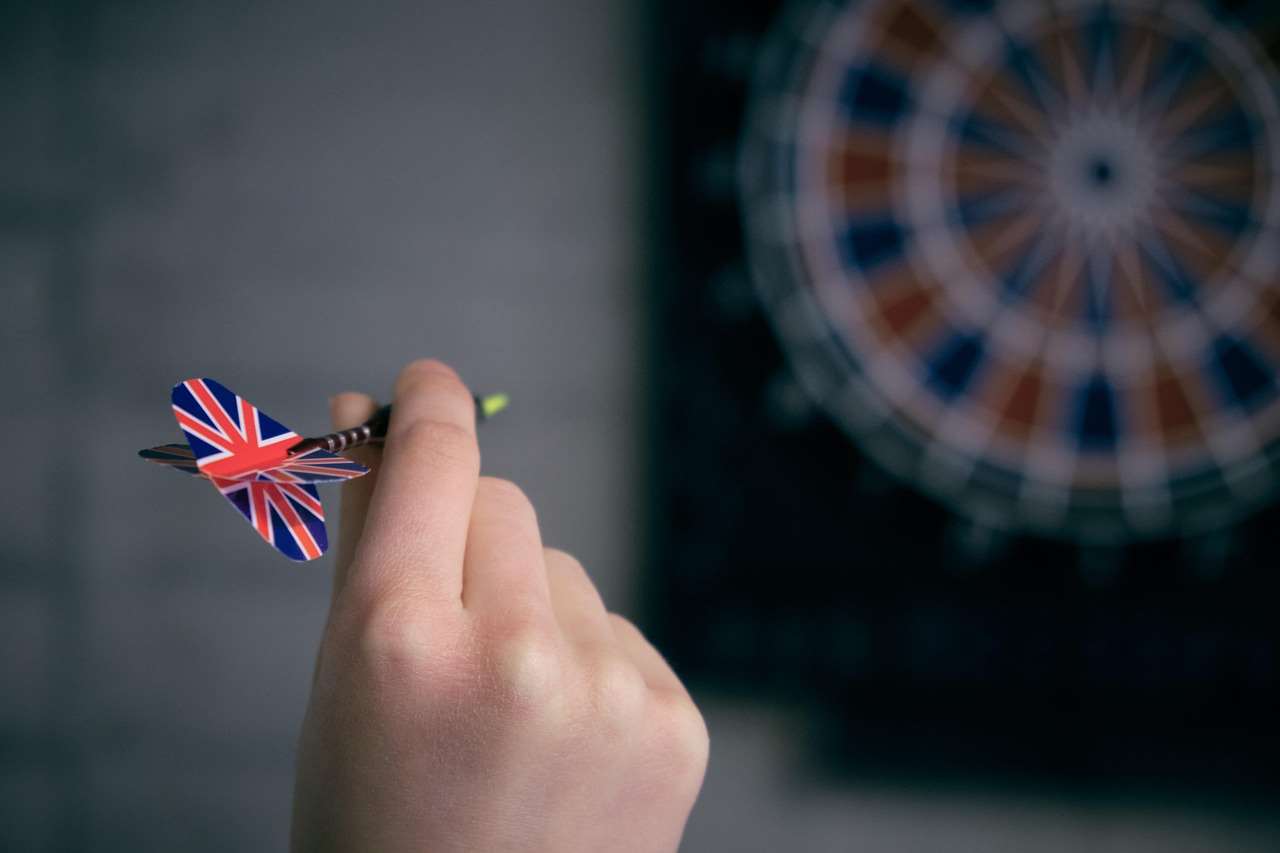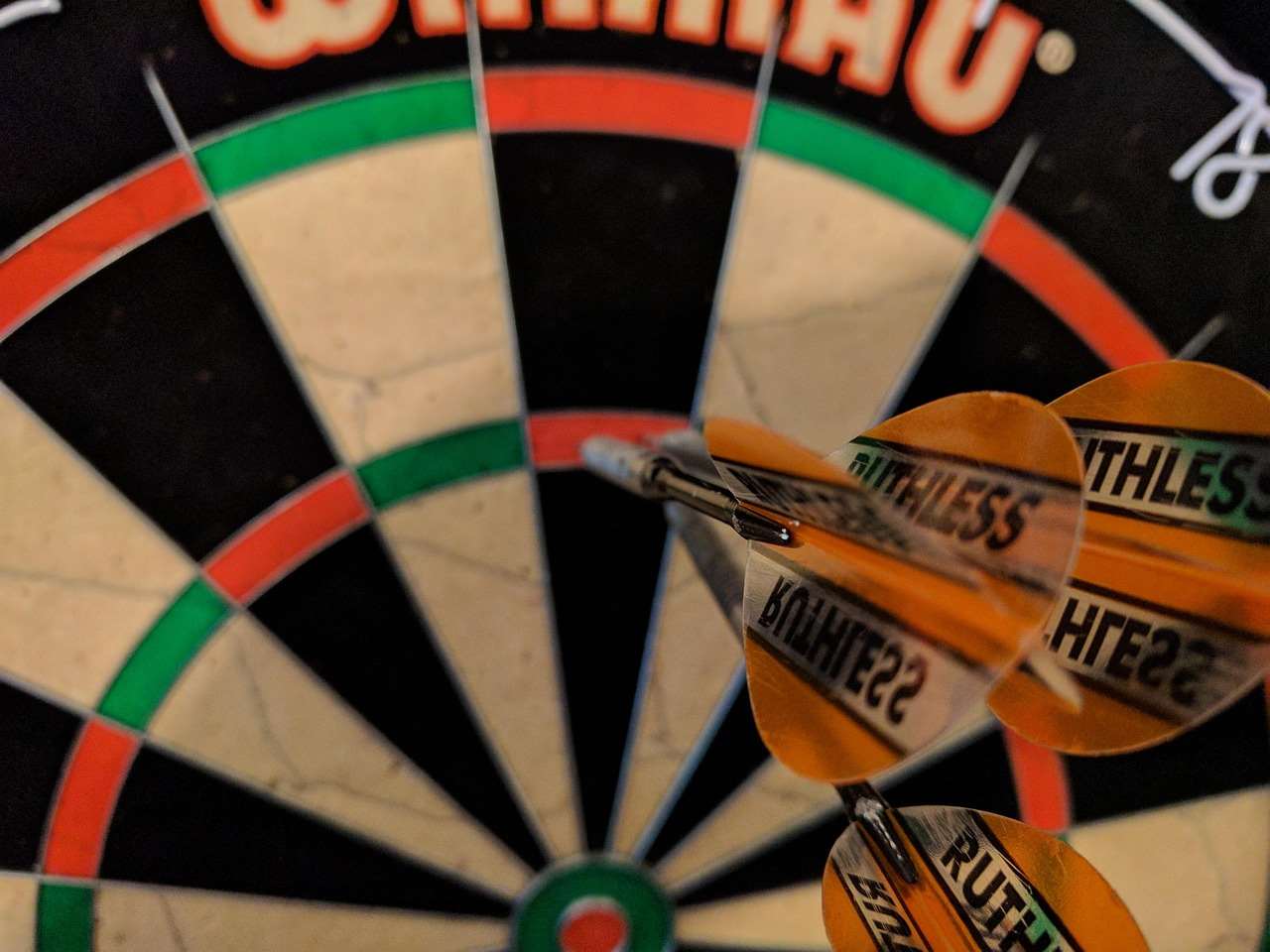Understanding the darts score count is fundamental to enjoying and excelling in the game. This article provides a comprehensive guide to calculating scores, common scoring errors, and strategies to improve your game, from basic rules to advanced techniques.
⚠️ Still Using Pen & Paper (or a Chalkboard)?! ⚠️
Step into the future! The Dart Counter App handles all the scoring, suggests checkouts, and tracks your stats automatically. It's easier than you think!
Try the Smart Dart Counter App FREE!Ready for an upgrade? Click above!
Understanding the Basics of Darts Score Count
At its core, the darts score count involves subtracting the value of each dart thrown from a starting score, typically 501 or 301. The goal is to reach exactly zero. Exceeding zero, known as “busting,” results in the score reverting to what it was at the start of that turn.
Here’s a breakdown of the different sections of the dartboard and their corresponding point values:
- Single Numbers: The value of the number in each section.
- Double Ring: Doubles the value of the number.
- Treble Ring: Triples the value of the number.
- Bullseye: The outer bullseye is worth 25 points, and the inner bullseye (double bull or bull) is worth 50 points.
- Outer Bullseye: Generally worth 25 points.
Accurate darts score count hinges on knowing these values instinctively, allowing you to focus on your throw and strategy.

Calculating Your Score: A Step-by-Step Guide
Let’s go through a practical example to illustrate how to calculate your score during a game of 501 darts. Suppose you start with 501 points, and your first turn consists of the following:
- Dart 1: Single 20 (20 points)
- Dart 2: Treble 20 (60 points)
- Dart 3: Single 5 (5 points)
To calculate your remaining score, add up the points from your three darts: 20 + 60 + 5 = 85. Then, subtract this total from your starting score: 501 – 85 = 416. Your score after the first turn is 416.
It’s vital to keep a running total. Many players use a whiteboard or a Dart game scoring app (https://dartcounterapp.com/) to assist with this, especially when the pressure is on. These apps often have features to automatically calculate remaining scores and suggest optimal checkout routes.
Common Scoring Errors and How to Avoid Them
Even experienced players can make mistakes in their darts score count. Here are some common errors and tips on how to avoid them:
- Misreading the Board: This is one of the most frequent errors. Always double-check the number you hit, especially in the heat of the moment. A quick glance can be deceiving.
- Forgetting to Subtract: It’s easy to get distracted, especially if you’re chatting with friends or watching other games. Stay focused on your score and ensure you correctly subtract your points each turn.
- Busting: This occurs when you score more points than needed to reach zero or when you finish on a number other than a double (except for a bullseye finish). Be mindful of your remaining score and plan your throws accordingly.
- Incorrect Addition: Simple arithmetic errors can happen. Using a calculator or a scoring app can help prevent these.
To minimize errors, always announce your score after each turn, allowing your opponent to verify your calculations. This practice promotes fair play and ensures accuracy.
Strategic Checkout Routes and Darts Score Count Planning
Mastering checkout routes is crucial for closing out a game effectively. A checkout route refers to the sequence of throws required to reduce your score to zero, finishing on a double or the bullseye.
Here are some common checkout combinations for various scores:
- 40: Double 20
- 32: Double 16
- 16: Double 8
- 8: Double 4
- 4: Double 2
- 2: Double 1
- 50: Bullseye
Planning your checkout in advance allows you to set up your throws and increase your chances of hitting the required doubles. Knowing what numbers to aim for based on your remaining darts score count is a key skill.

Advanced Scoring Techniques and Mental Game
Beyond the basic arithmetic, advanced players employ mental strategies to optimize their darts score count. This involves anticipating potential outcomes and adjusting their throws accordingly.
Here are a few advanced techniques:
- Understanding Probabilities: Knowing the probability of hitting certain numbers helps you make informed decisions. For example, if you need 80, aiming for treble 20 leaves you with 20, which is a simpler checkout than if you hit single 20, leaving you with 60.
- Opponent Awareness: Pay attention to your opponent’s score and playing style. This allows you to anticipate their moves and adjust your strategy accordingly.
- Mental Toughness: Darts is as much a mental game as it is a physical one. Developing mental resilience helps you stay focused under pressure and recover from setbacks.
Practicing under pressure, simulating match conditions, and visualizing successful throws can significantly improve your mental game.
Also consider experimenting with darts flights personalised to enhance your game and mental state by customizing your darts to suit your personal preferences. They may not directly affect your scoring, but could bring subtle mental advantages.
The Role of Equipment in Darts Score Count Accuracy
While skill and strategy are paramount, having the right equipment can also contribute to your darts score count accuracy. The weight and grip of your darts, the quality of your dartboard, and the lighting in your playing area all play a role.
- Darts: Experiment with different weights and grip styles to find darts that feel comfortable and consistent in your hand.
- Dartboard: Invest in a high-quality dartboard with thin wires to minimize bounce-outs.
- Lighting: Ensure adequate lighting to clearly see the dartboard and avoid shadows that can obscure your target.
Maintaining your equipment is also crucial. Regularly clean your dartboard and sharpen your darts to ensure optimal performance. Regularly checking your setup can help maintain a good darts score count.

Practice Drills to Improve Your Darts Score Count
Consistent practice is key to improving your darts score count. Incorporate these drills into your training routine to hone your skills:
- Around the Clock: Start at 1 and work your way around the board, hitting each number in sequence. This drill improves your accuracy and consistency.
- Shanghai: Aim for a specific number (e.g., 20) and try to hit the single, double, and treble in sequence. This drill enhances your precision and checkout ability.
- Checkout Practice: Focus on practicing common checkout combinations. This drill builds your confidence and proficiency in finishing games.
Record your scores during practice sessions to track your progress and identify areas for improvement. Don’t get discouraged by bad throws. Instead, analyze the causes and adjust your technique accordingly. Knowing when to call a darts white wash on yourself in practice is also beneficial.
Variations of Darts and Their Impact on Scoring
While 501 is the most common format, there are other variations of darts that can impact scoring rules. Knowing these variations adds versatility to your game.
- 301: A shorter version of 501, ideal for quicker games. The scoring rules are the same.
- Cricket: A different format altogether, where players score points by hitting specific numbers (20, 19, 18, 17, 16, 15, and bullseye) to “open” and “close” them. Strategy involves targeting numbers your opponent hasn’t yet opened or closed.
- Round the World: Similar to “Around the Clock,” players must hit each number in order. The first to complete the circuit wins.
Each variation requires a unique approach to darts score count and strategy.
Keep in mind the double top darts voucher code opportunities can help you afford various dartboards or equipment to practice these variations.

The Future of Darts Scoring: Technology and Innovation
Technology continues to revolutionize the world of darts, including the way we track and analyze scores. Electronic dartboards, scoring apps, and online platforms are transforming the game for players of all skill levels.
- Electronic Dartboards: These boards automatically calculate scores, eliminating the need for manual tracking and reducing errors.
- Scoring Apps: Mobile apps provide real-time scoring, checkout suggestions, and performance analysis.
- Online Platforms: Online darts platforms allow players to compete against each other remotely, with automated scoring and statistics tracking.
These innovations make it easier than ever to improve your darts score count and enjoy the game.
The Importance of Good Sportsmanship and Ethical Darts Score Count
While winning is the goal, maintaining good sportsmanship and ethical behavior is essential in darts. This includes accurately tracking your score, acknowledging your opponent’s good throws, and respecting the rules of the game.
Here are some guidelines for ethical darts score count:
- Honesty: Always report your score accurately, even if it means correcting a mistake in your favor.
- Respect: Treat your opponent with respect, regardless of their skill level.
- Fair Play: Adhere to the rules of the game and avoid any actions that could be considered cheating.
By upholding these principles, you contribute to a positive and enjoyable playing environment for everyone.

Conclusion: Mastering the Darts Score Count for a Winning Game
Mastering the darts score count is fundamental to success in the game. By understanding the basic scoring rules, avoiding common errors, practicing strategic checkout routes, and embracing technology, you can significantly improve your performance. Remember that consistency, accuracy, and mental toughness are all crucial factors.
Take the information provided in this article and start practicing regularly. Utilize scoring apps or electronic dartboards to track your progress. With dedication and focus, you’ll see noticeable improvements in your darts score count and overall game.
Ready to take your game to the next level? Start practicing those checkouts today and aim for that bullseye! Visit Dart game scoring app to enhance your scoring prowess!
Hi, I’m Dieter, and I created Dartcounter (Dartcounterapp.com). My motivation wasn’t being a darts expert – quite the opposite! When I first started playing, I loved the game but found keeping accurate scores and tracking stats difficult and distracting.
I figured I couldn’t be the only one struggling with this. So, I decided to build a solution: an easy-to-use application that everyone, no matter their experience level, could use to manage scoring effortlessly.
My goal for Dartcounter was simple: let the app handle the numbers – the scoring, the averages, the stats, even checkout suggestions – so players could focus purely on their throw and enjoying the game. It began as a way to solve my own beginner’s problem, and I’m thrilled it has grown into a helpful tool for the wider darts community.